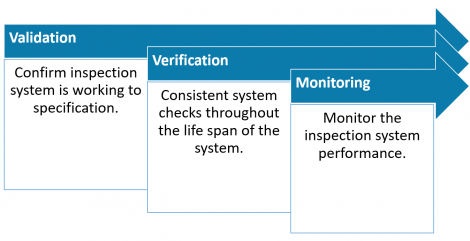The FDA’s Food Safety Modernization Act (FSMA) is being called the most sweeping reform of U.S. food safety laws in more than 70 years. Former President Obama signed the law on January 4, 2011 and since its signing, the FDA has been finalizing the implementation rules. From the farm to the dinner plate, the food regulatory system overhaul has an impact on every segment of the food supply chain.
The FSMA is changing the culture of the food safety system in the United States. FSMA shifts the focus of the FDA to ensuring food safety through prevention of microbial contamination rather than just reacting to the problem after it has already occurred. With new changes in food safety regulations also come new compliance challenges for the food industry. Every business involved with the production of food need to invest the time to understand the rules implemented by the FMSA. The Food Safety Modernization Act has a multitude of standards that must be met and procedures to be followed in order to comply with the law.
FDA’s rule on food defense requires domestic and foreign facilities to address vulnerable processes in their operations to prevent acts on the food supply intended to cause large-scale public harm. The rule requires the largest food businesses to have a written food defense plan that addresses significant vulnerabilities in a food operation.
Inspection systems must ensure food manufacturers and processors meet the specific food safety requirements mandated by the county in which they operate and sell products. Manufactures and processors can avoid costly recalls, protect the integrity of their brands, maintain loyal customers, and avoid the risk of costly liability lawsuits. Inspecting and detecting are important purposeful processes in the production cycle.
With current regulations, the food and beverage manufacturing industry are embracing vision system automation to protect its products and consumers. Throwing away valuable product or recalling a product due to inspection failure is a manufacturer’s worse nightmare. With the many stages throughout the manufacturing process, on rare occasions, contaminants can end up on the production line.
In order to meet the FMSA requirements, manufacturers must ensure their inspection systems are working properly at each stage in the equipment lifecycle. There are three stages, validation, verification, and monitoring. Each stage plays a distinct role in the process.
The  Validation Stage
Validation Stage
At this stage, the manufacturer ensures the system the customer ordered is designed and manufactured to conduct the inspections required prior to delivery. This can be accomplished at the manufacturing facility using containers the customer would like to inspect. Once installed on site, the manufacturer’s technician tests the system after it is installed on the production line. However, if the producer changes the products to be inspected, the system will need to be re-validated for each change.
The Verification Stage
During this stage, the inspection systems are checked regularly to verify system effectiveness and must be done throughout the life of the system.
The Monitoring Stage
The monitoring process can be done by line operators but more innovative machines have built-in performance monitoring software which automates the process and alerts the line operators when there is a problem. Quality assurance managers have documentation in real time thus allowing them the intelligence to measure the return on investment and data in case of regulator visits.
Inspection systems ensure manufacturers not only adhere to regulations, they protect the integrity of their brand and bottom-line. At FILTEC, we pride ourselves on providing our customer’s inspection system expertise to assist them in meeting production goals, adhering to safety regulations, and providing their customers quality products. Contact us to learn more about our food and beverage inspection systems.
